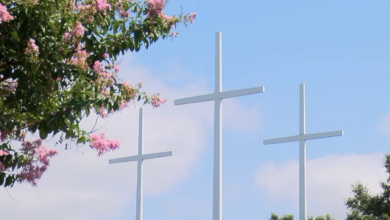Mexicans readying traditional Day of the Dead altars despite higher costs

By Jacob Sanchez
Mexico City, Oct 31 (EFE).- Mexicans are preparing their traditional Day of the Dead altars for the Nov. 1-2 celebration even as inflation is the highest in two decades and has raised the cost of their preparations by almost 18 percent.
On average, each Mexican will spend 1,600 pesos (about $80) on setting up their altars to their deceased ancestors, a 17.6 percent increase over what they spent in 2021, according to a study carried out by the HelloSafe financial Web site.
The altars in each Mexican household are decorated with marigolds, confetti and other colorful paper, sugar skulls, the so-called “bread of the dead,” “mole” or thick chili sauce and the favorite dishes of the deceased relatives who are being commemorated.
The various adornments and decorations generally take up about 40 percent of the budget for the projects, but there is also the food and drink to buy – which have risen by 45 percent in cost over the past year – according to the HelloSafe study.
Business-owners consulted by EFE at the iconic Jamaica Market in Mexico City agreed that prices have climbed somewhat, although they said that they’re trying “not to raise prices too much.
One of them, Aaron Diaz, sells resin or plastic skulls, characters known as “catrinas” and other figures standing more than a meter (39 inches) high, as well as figures representing the pre-Hispanic “xoloitzcuintle,” a dog that helps the dead cross into the Great Beyond, according to ancestral traditional.
Diaz said that Mexicans also buy incense and myrrh to purify their homes and guide the spirits of the dead to the altars.
“If the price (of the items) has risen a little, I won’t lie to you, the quality nevertheless is very good and you shouldn’t complain because in the end (these items) remain accessible,” Angel Vargas, who runs the “Las Gueras” kiosk said.
Vargas said that his customers buy confetti and colored paper, along with candles, but with the price hikes they are only buying what’s strictly necessary, since many people have saved their altar decorations and other adornments from last year.
Nevertheless, inflation stood at an annualized 8.7 percent in September, one of the highest levels in Mexico in the past two decades.
Carlos Giovani, with the “Lupita” flower shop, said that something that everyone needs for their Day of the Dead altars are marigolds, but their price has risen between five and 10 pesos ($0.25-0.50) over that of last year.
The flower shop owner said that his providers are in Xochimilco, in southern Mexico City, and this year he estimated that more than five million of the bright orange flowers would be available.
Another important element is “bread of the dead,” which – according to HelloSafe – has risen in price by 18.52 percent to about 16 pesos ($0.80) per piece.
At some shops, the bread is also offered covered with sugar, chocolate syrup, marmalade, cheese and other items, and those more elaborately prepared pastries generally cost 40 pesos ($2) each.
Day of the Dead altars have emerged as a combination of the Catholic religious rituals brought to Mexico by the Spanish conquerers and indigenous traditions celebrated since pre-Hispanic times.
The pre-Hispanic cultures introduced their cultural veneration of the dead into the Christian calendar to celebrate the end of the agricultural cycle of the all-important corn crop, Mexico’s main food product.
The Day of the Dead celebration is held on Nov. 1-2, the first day corresponding to All Saints Day for children who have died and the second day being reserved for commemorating the adult Christian “faithful” dead.
For many Mexicans, these traditions are special and must be maintained, regardless of any price rises.
“This is something very beautiful about our country,” Elena Perez told EFE as she strolled about the market.





